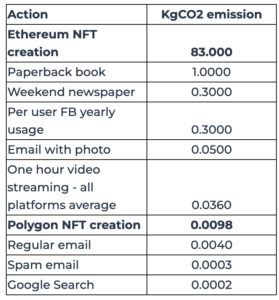Earlier this week it was announced that Kevin Smith would release his shelved horror film Kilroy Was Here as 5,555 minted NFTs and in doing so assumed complete control of distributing his work through the utilization of the blockchain. For clarification, Non-Fungible Tokens are digital files created on the blockchain to be bought/sold with cryptocurrency. Whether it’s a document or a movie you can name the price, maintain ownership, set the percentage of resale value you pocket if buyers sell it themselves, and make as many copies as you wish for the little to no money it costs to mint the NFT onto the blockchain.
Slipknot sold sneak peaks into their new album as NFTs. Quentin Tarantino auctioned deleted scenes from Pulp Fiction as NFTs. Mark Cuban (in an interview with Steve-O) regretted not maintaining the rights to any of his productions with Magnolia Pictures for the reasoning that he wished he could sell some of his movies as NFTs. Joe Dante sold a picture of the Peltzer Peeler Juicer as an NFT. Whether you’re independent or a part of a major company, it’s just reasonable to conclude that this is the future of distributing your digital products.

So why do people still manage to have a problem with NFTs? Back when NFTs were starting to gain traction, studies shown that they emitted high counts of CO2 as they’d physically burn through graphic cards to be made. As we began to grow more aware of how our tools negatively effect the environment, the studies would expand further to show that so many things that we engage with daily would cause much more CO2 harm than NFTs have in their infancies.
As you might have noticed there are two different types of NFTs which are Ethereum and Polygon. Ethereum NFTs are the one that can do 20% the damage of a cross-country flight. Polygon NFTs are the environmentally friendly alternative that does less harm than if you were to send three emails. Unlike Ethereum, Polygon NFTs are free to mint. If you look into the carbon footprint left behind by a DVD, you could mint 100 polygon NFTs and it still wont do the damage that printing one DVD does.
Whether you have art you want to sell, to be more environmentally conscious, or have an open mind for what could be considered “the next big thing”. It’s time for us as creators and consumers to admit that distribution companies and physical media are no longer required…
